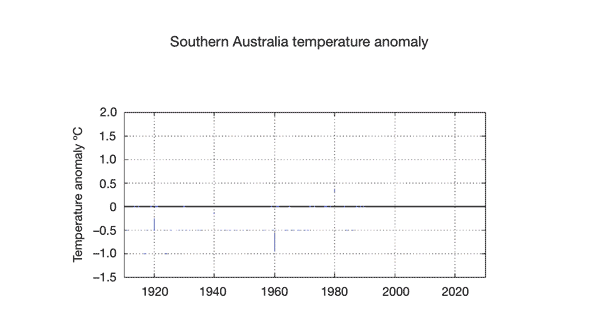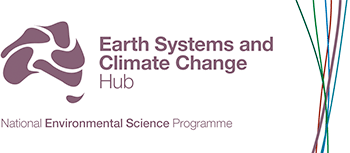1 November 2016
We can easily rate how accurate a weather forecast is, because we only have to wait a day or two (or even hours) to see if it was right.
Seeing how accurate climate projections are is a little harder, because we have to wait decades (and centuries) to if they are on track. To make it even trickier, we can only compare observations with a climate projection that uses comparable greenhouse gas emissions to what we’ve observed.
The first climate projections were developed in the 1980s, so now we can start checking how they are going against observations – which is exactly what Michael Grose, James Risbey and Penny Whetton did.
Are we on track?
In Hub-supported research published in Climatic Change, Michael and his colleagues revisited the regional temperature projections for 2030 from the Intergovernmental Panel on Climate Change (IPCC) first assessment report in 1990 and CSIRO’s 1992 projections, and compared them to 25 years of observations.
They found that most regional temperature projections from the early 1990s are proving to be reliable, including for Southern Australia, the Sahel, Southern Europe and Southern Asia.
For two regions, Northern Australia and central North America, observations are currently tracking at the low end of projections. This is due to climate variations, including regions that have experienced cooling during global warming (sometimes called ‘warming holes’).

Warming holes and climate variability
This research confirms the importance of natural climate variability at relatively short (by climate standards) timeframes. Even though we are seeing a clear warming trend in global temperatures, the climate at the regional scale (e.g. for Australia) varies from year to year and even decade to decade, so warming holes of 25 years or even more should be expected.
This is because changes in solar radiation, aerosols (tiny particles in the atmosphere), atmospheric and ocean circulation patterns, and the activity of large climate patterns such as the El Niño–Southern Oscillation and Interdecadal Pacific Oscillation, all determine the climate we experience. Depending on how this combination of factors comes together, the temperature trend may be lower than or higher than the long-term tendency at any given point in time.
The latest set of global climate models suggest that a cooling trend in some places was to be expected in the recent past. These trends are more likely in places with high decade-to-decade variability or where the long-term trend is low. Models also suggest that a cooling of temperature for 25 years is possible in the near future in many places, including Australia, even if we follow a high emissions scenario with rapid global warming.
Projection perception
Unfortunately, natural climate variation muddies our perception of the accuracy of projections.
A weather forecast of rain is accurate if I wake up and it’s raining, but not accurate if it’s a sunny day with not a cloud in the sky. If a climate projection suggests temperatures are projected to rise, but I wake up on a November morning to find frost on my car windshield, is that projection wrong?
To avoid misunderstanding and confusion, Michael and his colleagues suggest that the influence of climate variability should be communicated more clearly in climate projections.
Are projections reliable?
So what’s the message here? Should we ‘trust’ climate projections?
Yes, we should.
Even early projections are showing themselves to be reliable—and as our understanding of the climate system increases and our ability to model it continues to improve, climate projections will become more accurate. They remain the best tool we have for climate adaptation planning.
Read more: Grose MR, Risbey JS, Whetton PH. 2016. Tracking regional temperature projections from the early 1990s in light of variations in regional warming, including ‘warming holes’. Climatic Change, doi:10.1007/s10584-016-1840-9
This research is an output of Project 2.6 Regional climate projections science, information and services.

